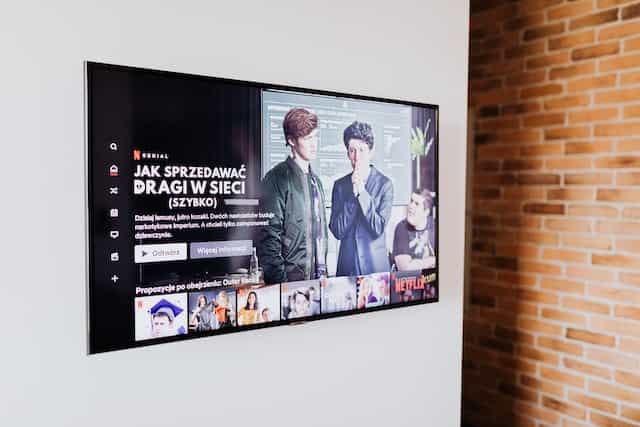TV Advertising has evolved and thrived. It has earned an undeniable reputation as one of the most cost-effective and profitable strategies to boost brand awareness and create more quality leads. In part, the evolution of this medium has made the task of entrepreneurs far easier. They pretty much know how to approach their future business campaigns and make lucrative decisions.
Terminology has also expanded, and tactics have become more diverse. The question, however, is which broadcasting approach is best for one’s investment. And what’s the difference between Linear TV vs CTV? And what do you need to do to make it worth every penny?
What’s Linear TV?
This is the easy part. Linear TV is what we all think of when we hear the word ‘TV’. Traditional television received through a broadcast station or a transmissions system, including satellite services or the internet, is defined as Linear TV.
In a sense, viewers get to choose what to watch. But, they must select a specific channel at a particular time that the service provider has “lined up” with programming.
Linear TV was a pretty significant step in the evolution of the ad industry. But there was just one big problem: there was no targeting, and it just entailed broadcasting to the masses. To be fair, though, linear TV was a relatively reliable strategy at its time.
And, of course, it has been upgraded over the years. Some people still believe that linear TV has a future. Leveraging cloud-based infrastructure has enabled linear TV to incorporate new features, including personalization and audience targeting. However, more efficient alternatives have emerged that can replace, or at least effectively compete with, linear TV.
What’s CTV?
CTV refers to a TV connected to the internet in the most unembellished definition. However, it evolved into a fully-fledged advertising method once it was introduced.
CTV involves airing TV commercials to users watching through an internet-connected TV. Think of smart TVs with in-app features (Apple TV, Roku, etc.). Let’s suppose the user is watching a show on the NBC app. The ad can be displayed ‘while’ they are watching the show.
CTV has a slightly lower reach than traditional Linear TV. However, CTV is widely recognized as the most quality form of targeted video advertising. The million-dollar question to answer is: why is CTV such a vital part of marketing strategy?
Linear TV Vs CTV: Advantages Of Connected TV Advertising
More and more people are tuning in to connected TVs. Not only do they want to select content, but they also want to watch it whenever they wish. With Linear TV, that’s not an option. Apart from all the possibilities offered by the internet, now we don’t have to worry about missing our favorite show or waiting for hours for it to start.
In a fair Linear TV vs CTV comparison, we should add that traditional TV also enjoys a degree of targeted advertising. For example, once you figure out what kind of audience you want to target, you need to meet their expectations at the right time and place. You need to determine which channels, programs, and hours will most likely create quality leads.
With CTV, though, you take a slightly different approach. The central question remains the same: who’s the audience we’re trying to target? Once we figure that out, we will reach them regardless of when, where, or what they’re watching. This is known as the “audience-first approach” compared to the linear TV channel-based approach.
This is a crucial point. Many who value Linear TV advertising, in fact, value the channels. But marketing evolution has proven that the audience or leads deserve most of our attention. The medium, the type of device, the geographical location and everything else are of secondary importance.
Boosting Brand Awareness With CTV
There are many fascinating things about CTV, such as higher flexibility or benefit-cost ratio. But increasing brand awareness is where CTV truly shines. With CTV, you can run ads to people who have voluntarily positioned themselves to be entertained. Your story is much more impactful and compelling when your audience is ready to hear it.
However, when you have the perfect opportunity to reach your target audience, be well prepared with quality content. CTV offers viewers a more immersive and entertaining experience that should be completed with mutual respect and a solid audience engagement strategy.
Complete Control Over Return On Investment
Measuring results in real-time is the whole premise of digital advertising. And that’s true for CTV as well. Before you can draw a conclusion, you need to answer a series of questions: What was the ad’s reach? What was the frequency, i.e. how often was your ad seen within a certain time? Or even: How long did viewers watch the ad? And the list goes on.
But the advantage is that you can use these figures to determine the number of viewers who saw the ad. Viewers that linear TV couldn’t reach. Having this information and being able to make comparisons and cost-benefit analyses are already a success. In short, CTV provides the opportunity for business owners who want to make sure their investments are in the right place.
Relevance & Frequency Are Critical Parts Of CTV
Contextual targeting is a crucial aspect of CTV. You pay for your ads to reach all viewers with different demographic and contextual characteristics with linear TV advertising. With CTV, you can optimally target your desired consumers. What could be better than reaching consumers interested in your brand or product?
Frequency is an underemphasized factor in advertising. Finding the right frequency is a true marketing art because it’s all about balancing between improving brand awareness and making people tired of watching the same commercial again.
Going Beyond ‘Last Touch Attribution’
Last-touch attribution is a model where the last click, visit, or impression in a conversion path is given 100% credit. Most tracking programs, including Google Analytics, use this model to evaluate ad success rates.
But here is the catch. Last touch attribution completely ignores the impact of various prior targeting strategies. Hence, when looking at the results, it is advisable to take a more comprehensive funnel approach to where credit can be attributed to. CTV is a better option if you focus on increasing awareness and consider all touchpoints along the way.
Linear TV Vs CTV: Who Wins The Final Battle?
It’s essential to acknowledge linear TV advertising is still alive and kicking. Undoubtedly, it still provides a powerful marketing force for many companies. But CTV’s popularity is growing incredibly fast as more and more people start streaming. Therefore, it’s safe to say that both approaches will coexist and continue their peaceful and complementary coexistence, at least in the short term.
Abandoning linear TV for CTV means leaving a large group of people who may not have a connected TV behind. Hence, finding a way to marry these two and make the best utilization of their capabilities is a challenging responsibility for marketing strategists.
Bottom Line
When creating campaigns, we believe that clients should be aware of ROI, efficiencies, and the share of viewership attributable to linear TV vs CTV. With the ever-growing popularity of streaming, we recognize the importance and necessity of a solid CTV advertising strategy more than anyone else in the industry.
After years of working with a variety of clients, we now believe that helping our clients is our strength. Contact us today so we can begin our journey together.





